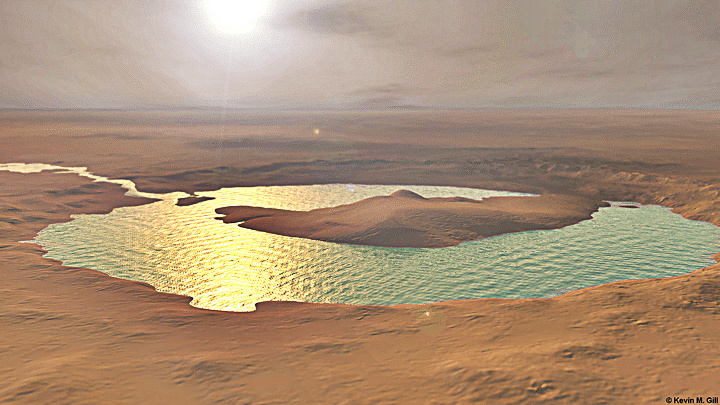A hugely exciting paper in the journal Nature Astronomy today suggests that signs of life on Jupiter’s moon Europa may be relatively easy to find, as it may exist just centimeters below the surface.
Led by Tom Nordheim from NASA’s Jet Propulsion Laboratory in California, the study suggests that near the poles of Europa, amino acids could exist for 10 million years just 1 to 3 centimeters (0.4-1.2 inches) below the surface. Towards the equator, this increases to several tens of centimeters.
“Europa is really interesting to planetary scientists because we think that life could exist within its ocean, which is located miles beneath its icy surface,” Nordheim told IFLScience. “What’s really exciting is that we think that material from Europa’s ocean might have been transported up to the surface.”
The major issue though is the amount of radiation blasted onto Europa by Jupiter. Standing on the surface is equivalent to “standing inside a particle accelerator,” said Nordheim, meaning that any biological material from the ocean would likely be destroyed.
However, it appears that some biological material can survive at these relatively small distances below the surface. That’s based on modeling from the scientists, which looked at the global pattern of energetic electrons hitting the surface.
The team found that some regions on Europa may experience a dose of about 74 million grays (Gy) from Jupiter’s radiation. Earth’s most radiation-resistant bacteria, Deinococcus radiodurans, can only survive up to 5,000 Gy, so we can probably rule out finding any living organisms. But signs of life could survive.
In an accompanying News and Views article, John Cooper from NASA’s Goddard Space Flight Center said we could find “biochemical fragments of past life mixed into the surface ice”, such as amino acids, at these levels. This means an upcoming mission, like NASA’s proposed Europa Lander, would only have to scratch slightly below the surface to find biosignatures.
NASA is currently considering sending a lander to Europa. NASA/JPL-Caltech
The levels of radiation are less at the poles than at the equator, which is why biological material here might be easier to reach. Searching for actual organisms might be a bit ambitious, but certainly the chances of finding biosignatures look enticing.
And if a probe landed in a region with fresh material, deposited within the last 1,000 years, we could even discover “fully pristine biosignatures” that had not been too damaged by radiation yet, said Cooper.
There are a couple of caveats though. The first is this is a model – so we don’t have any direct measurements to confirm it. We also don’t know if Europa’s ocean can support life in the first place. And Nordheim and his team note that meteorite impacts could disturb parts of the surface, making detections difficult.
But the paper does give us the exciting prospect that signs of alien life on another world may be tantalizingly within reach. “This makes it possible to plan a mission to search for signatures of life on Europa with technology and capabilities that exist today,” said Nordheim.
Europa has steadily grown as a possible location for extraterrestrial life over the last decade or more. We now know that beneath its kilometers-thick icy surface, it has a liquid ocean that may contain some of the conditions necessary for life.
At the poles of Europa, water from this ocean is fired into space in plumes, similar to a process that occurs on Saturn’s moon Enceladus. Some proposals have suggested we could fly through these plumes to sample them and see what they contain.
Europa's poles regularly fire material into space. NASA/JPL-Caltech
NASA is currently developing a mission to launch to Europa in the early 2020s, called the Europa Clipper. This will perform a number of daring flybys of the moon, mapping its surface in detail. ESA’s Jupiter Icy Moons Explorer (JUICE), launching in 2022, will also study Europa.
A lander on Europa is regarded as the best way to search for life, though. NASA is considering various ways to do this, such as including one on the EuropaClipper mission, although that’s very much up in the air at the moment.
What is clear from this latest study is that Europa looks incredibly enticing in the search for life. While Mars understandably gets a lot of attention, the prospects of finding life on or near its surface are slim. If Europa’s secrets are just centimeters below its surface, it may represent our best bet for finding life elsewhere in the Solar System.

Post A Comment:
0 comments: